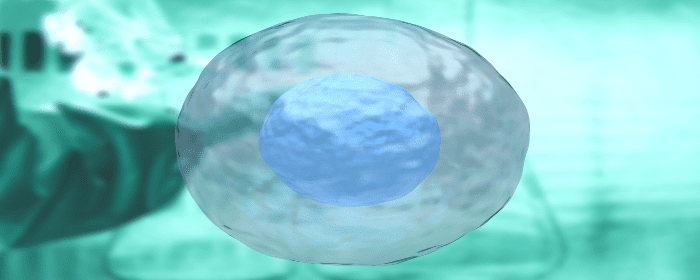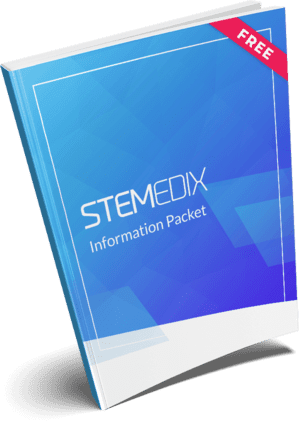
by Stemedix | Feb 25, 2020 | Stem Cell Therapy
For millions of people across the globe, orthopedic issues cause discomfort, limited mobility, and other frustrating symptoms which make it challenging to participate in daily activities. Osteoarthritis, for example, affects the joints by wearing away the cushiony cartilage between bones. While the prevalence of the condition is on the rise, conventional treatments are still lacking: patients are often required to choose between temporary fixes such as medications to mask the pain or invasive surgical procedures. And, this isn’t isolated to osteoarthritis; patients with other orthopedic issues face similar dilemmas. For those suffering, there are several benefits of stem cell therapy for orthopedic issues.
This treatment involves the targeted administration of stem cells, which can self-renew and transform into virtually any cell type in the body. Researchers believe they hold tremendous healing potential for orthopedic issues due to their abilities to change into cartilage cells, minimize inflammation, and release cytokines to reduce pain and slow the degenerative process.
Below, discover some of the benefits of stem cell therapy for orthopedic issues, as well as the types of conditions they can treat.
Common Orthopedic Conditions Treated with Stem Cell Therapy
The potential applications for stem cell therapy span far and wide. Not only have they been used to treat orthopedic conditions, but they’re also used for patients with neurodegenerative and autoimmune conditions.
Some of the specific orthopedic issues being treated by stem cell therapy include:
· Osteoarthritis
· Sports and athletic injuries
· Musculoskeletal injuries
· Spinal cord injuries
· Degenerative disc disease
Benefits of Stem Cell Therapy for Orthopedic Issues
There are many advantages to stem cell therapy. Here are just a few of the most noteworthy benefits to consider:
· Reduced pain and inflammation
· The ability to delay or prevent the need for invasive surgery
· Increased healing potential
· An all-natural treatment
· Safe and effective
Finally, but perhaps most importantly, this regenerative therapy can give new hope to patients who haven’t seen results from other treatment methods. Stem cell treatment could help to restore mobility, alleviate pain, reduce inflammation, and enhance overall quality of life — outcomes which may have previously seemed unattainable to patients with orthopedic issues.

by Stemedix | Feb 11, 2020 | Stem Cell Therapy, Erectile Dysfunction, Health Awareness
Erectile dysfunction (ED) is characterized by difficulty getting or maintaining an erection firm enough for sexual intercourse. It affects up to 30 million men and can stem from a broad range of causes, including stress, limited blood flow to the penis, and underlying conditions such as high blood pressure. While addressing any existing health issues that could be contributing to ED is important, addressing ED itself is also critical to supporting sexual health and quality of life. You may be asking yourself can stem cell therapy treat erectile dysfunction?
Traditionally, treatments for ED have included PDE5 inhibitors such as Viagra. Yet, these drugs are among the most controversial on the market. They relax the blood vessel walls in certain areas of the body and, while typically effective in addressing ED, are linked to both minor and serious side effects. Common side effects include nasal congestion, vision impairment and light sensitivity, indigestion, and headaches. More serious side effects include painful and long-lasting erections, damage to the optic nerve, hearing loss, and heart attack, among others.
When oral medications fail, treatments such as injection therapy and penile implants may be explored as a last resort. Yet, these treatments also have their own set of potentially serious side effects. For this reason, experts have been exploring alternative options for treating ED.
Stem Cell Therapy for Erectile Dysfunction
One promising treatment for ED which has emerged recently is stem cell therapy. In one clinical trial, men who have experienced ED after prostatectomy for prostate cancer experienced improved erectile function, even after all previously attempted treatments showed no results. The treatment has also shown promise for improving erections in men whose ED is caused by underlying conditions such as diabetes.
Stem cells work to promote tissue regeneration and healing, due to their ability to either become new cells through self-renewal or give rise to virtually any other cell type in the body. No other cells have these remarkable capabilities. When administered strategically, they can, therefore, promote the repair of almost any type of damaged or injured tissue.
Researchers are encouraged by their findings and believe that the treatment offers a powerful alternative to traditional therapies for ED, as well as a viable solution for patients who have not responded to other treatments. Men experiencing the frustrations of ED may therefore once again be able to achieve and maintain spontaneous erections without invasive surgeries, injections, or medications, thereby improving their sexual satisfaction and relationships.

by admin | Jan 23, 2020 | Musculoskeletal, Osteoarthritis, Stem Cell Therapy
Virtually everyone will have musculoskeletal pain at some point in their lives. For most, it is a short-lived pain that goes away in a few minutes or a few days. In many, however, musculoskeletal pain is a chronic, daily struggle. They wake up in pain, struggle with pain throughout the day, and pain interferes with their ability to sleep at night. Here is how doctors are using stem cells to treat musculoskeletal pain.
There are surprisingly few good treatments for chronic
musculoskeletal pain. One could take ibuprofen (Advil), naproxen (Aleve), or
acetaminophen (Tylenol) to treat short term musculoskeletal pain. However,
people with chronic musculoskeletal pain need to take these drugs multiple
times a day, every day. Over time, this can damage the liver or the kidneys.
Opioids are powerful painkillers but are not good choices
for treating chronic musculoskeletal pain. People who take opioids for more
than a few weeks for non-cancer, musculoskeletal pain are at great risk of
becoming physically dependent on the drug. Stated another way, they may become
addicted to opioids.
Mesenchymal stem cells are an attractive tool to treat musculoskeletal pain because of two main factors. First, they have the ability to find their way to the site of injury and inflammation. In other words, they collect at the site of musculoskeletal pain. Second, stem cells release a large number of substances into the surrounding area that block or reduce inflammation.
Researchers have been making good progress in initial studies of mesenchymal stem cells for various kinds of musculoskeletal pain. For example, people with musculoskeletal pain caused by osteoarthritis of the knee who received stem cells had profound reductions in pain, even great relief the knee debridement surgery (i.e. orthopedic surgery to remove damaged joint tissue and make the joint surfaces smoother. In separate work, Mesenchymal stem cells reduced knee pain improved physical therapy performance and increased the volume of the knee joint affected by osteoarthritis. Similar results have been obtained in people with musculoskeletal pain and osteoarthritis in the hip and foot.
It is important to note that the procedure is safe. In a review of 844 autologous Mesenchymal stem cells infusion procedures for the treatment of osteoarthritis, there were no major adverse events reported.
Musculoskeletal pain is very common. When people develop chronic musculoskeletal pain, it can be debilitating and dramatically diminish the health-related quality of life. While more work is needed, the results detailed here provide hope to the millions of people who struggle with daily musculoskeletal pain.
Reference: Labusca, L. et al. (2015). Stem cells for the treatment of musculoskeletal pain. World Journal of Stem Cells. 2015, Jan 26; 7(1): 96-105.

by admin | Dec 30, 2019 | Stem Cell Therapy, Adipose, Age Management, Mesenchymal Stem Cells, Stem Cell Research
Autologous stem cell treatments offer several advantages over other forms of stem cell treatment. In autologous stem cell treatment, a patient’s own stem cells are retrieved, processed, and injected back into the patient’s body. There is no need for a stem cell donor, and the entire procedure can take place in the same medical office. Since the patient’s own cells are used for an autologous stem cell treatment, there is no risk of disease transmission from a donor (because there is no donor) and no risk of rejection (because they are the patient’s own stem cells). Autologous stem cell treatments has some major benefits for the elderly.
Unfortunately, younger stem cells are better for
regenerative medicine than older stem cells are. Moreover, older people have
fewer stem cells that can be harvested than they did when they were younger. So
while autologous stem cell treatment is still advantageous, it becomes more difficult
to achieve as patients get older because their stem cells are fewer and less potent.
Making matters worse, older stem cells compete against more youthful stem
cells, making autologous stem cell treatments potentially even less effective
in older patients.
Fortunately, stem cell researchers are coming up with ways to make the most out of the stem cells that older patients still have. They still take a sample of tissue, such as fat, and harvest the stem cells contained within it. However, instead of injecting all stem cells from the sample (both older and youthful stem cells), researchers select and use only youthful stem cells. Furthermore, they make the treatments even more effective by injecting other substances (e.g. extracellular matrix) that help youthful stem cells survive, grow, and thrive.
To demonstrate the effectiveness of their approach,
researchers collected mesenchymal
stem cells from about a dozen older individuals aged 65 to 86 years old.
They then assorted the stem cells into different groups, separating youthful
from older stem cells. They then used special factors to help the youthful stem
cells grow, increasing the numbers by an impressive 17,000 times. So while only
8% of stem cells produced by older individuals are “youthful,” this laboratory
process increased those numbers to a point that they can be used for stem cell
treatments—even stored for future use!
The next phase of the research will be to inject these youthful stem cells into older patients and assess their effectiveness. However, even these preliminary results are exciting because they suggest that people of all ages can potentially benefit from autologous stem cell treatments, not just middle age and younger individuals.
Reference: Block, TJ et al. (2017). Restoring the quantity and quality of elderly human mesenchymal stem cells for autologous cell-based therapies. Stem Cell Research & Therapy. 2017 Oct 27;8(1):239.

by admin | Dec 18, 2019 | ALS, Exosomes, Mesenchymal Stem Cells, Stem Cell Research, Stem Cell Therapy
Amyotrophic lateral sclerosis or ALS is a devastating, progressive neurological disease. While the precise cause is unknown, ALS does destroy nerve cells in the spinal cord, which causes several debilitating symptoms. Often the first symptom of ALS is weakness in the hands or arms that is usually more pronounced on one side of the body. As more spinal cord nerve cells become dysfunctional and die, patients with ALS become weaker, their movements grow slower, and their muscles begin to atrophy (i.e. break down). At the same time, some muscles in the limbs become spastic, which means they are constantly in a contracted state. In later stages of ALS, patients have difficulty swallowing and breathing. Mesenchymal Stem Cell Treatment for ALS is a unique and new option.
The only drug to have any known survival benefit in ALS is riluzole. Patients who take riluzole live longer than those who do not; however, the drug does not improve function or meaningfully reduce symptoms. The only other approved ALS treatment, edaravone, may slow the rate at which ALS gets worse. However, neither of these drugs is a cure—far from it, in fact. Indeed, doctors and patients are left with virtually no effective treatment options for ALS.
Because ALS is caused by the destruction of nerve cells in the spinal cord, the regenerative properties of stem cells may offer a solution. The hypothesis is that stem cells—and exosomes collected from stem cells—can help protect, preserve, or even regenerate cells that are affected by ALS.
A flurry of research has been published over the last decade documenting the safety and possible effectiveness of mesenchymal stem cells for the treatment of ALS. In 2009, Deda et al. showed bone marrow stem cells injected into the spinal area were safe in patients with ALS, even showing that some patients had improvements in neuromuscular testing. The research groups of Karussis, Mazzini, Blanquer, and Baek showed similar safety results. Martinez et al. showed that stem cells derived from bone marrow could improve survival in patients with ALS. Rushkevich et al. showed that stem cell infusion improved the quality of life in patients with ALS.
While more work is clearly needed to determine the full effectiveness of stem cell treatment for ALS, the number of researchers working on this topic and the number of successful studies published in this area are reasons for hope. These clinical studies show that stem cell treatment for ALS is clearly safe and feasible. What is needed are larger clinical trials that specifically focus on the effectiveness of treatment, both in the near- and long-term.
Reference: Roberta Bonafede and Raffaella Mariotti. (2017). Stem cell mobilizers: ALS Pathogenesis and Therapeutic Approaches: The Role of Mesenchymal Stem Cells and Extracellular Vesicles. Frontiers in Cellular Neuroscience. 2017; 11:80.

by admin | Dec 5, 2019 | Crohn's Disease, Stem Cell Research, Stem Cell Therapy
Over the past few years, data has accumulated showing the promise for cell-based therapies to help in treating Inflammatory bowel disease with stem cells. Specifically, stem cells appear to offer the opportunity to overcome several weaknesses associated with conventional therapies that have targeted perianal Crohn’s disease.
Based on these positive results, scientists and healthcare providers have become more adamant about understanding the broader role stem cells could play in the treatment of all inflammatory bowel disease. A new review published in Current Gastroenterology Reports discusses this specific issue and offers insights into the direction of stem cell research as it relates to inflammatory bowel disease.
The authors of this review discuss data from over a dozen clinical trials that have already been conducted on the impact of stem cell therapies in Crohn’s disease. Thus far, much of the success of regenerative medicine for the treatment of Crohn’s disease has been for the specific treatment of perianal Crohn’s disease, which occurs when the digestive and gastrointestinal inflammation associated with Crohn’s disease extends to the anal area.
Given the frequency with which the lining of the intestine is inflamed in inflammatory bowel disease, including both perianal Crohn’s disease and non-perianal Crohn’s disease, research efforts are focusing more and more on how stem cells may be able to combat this type of luminal disease. The authors put forth suggestions for the types of information that researchers should aim to obtain if we are to adequately treat intraluminal disease with regenerative medicine.
The potential of stem cells to address inflammatory bowel disease that has been demonstrated so far provides hope that this type of strategy will help not only patients with perianal Crohn’s disease but those with other forms of inflammatory bowel disease as well. More research should help to determine if and how these therapies can be deployed to help this patient population.
Reference: Lightner, A.L. (2019). Stem cell therapies for inflammatory bowel disease. Current Gastroenterology Reports, 21(4), 16.







 St. Petersburg, Florida
St. Petersburg, Florida
